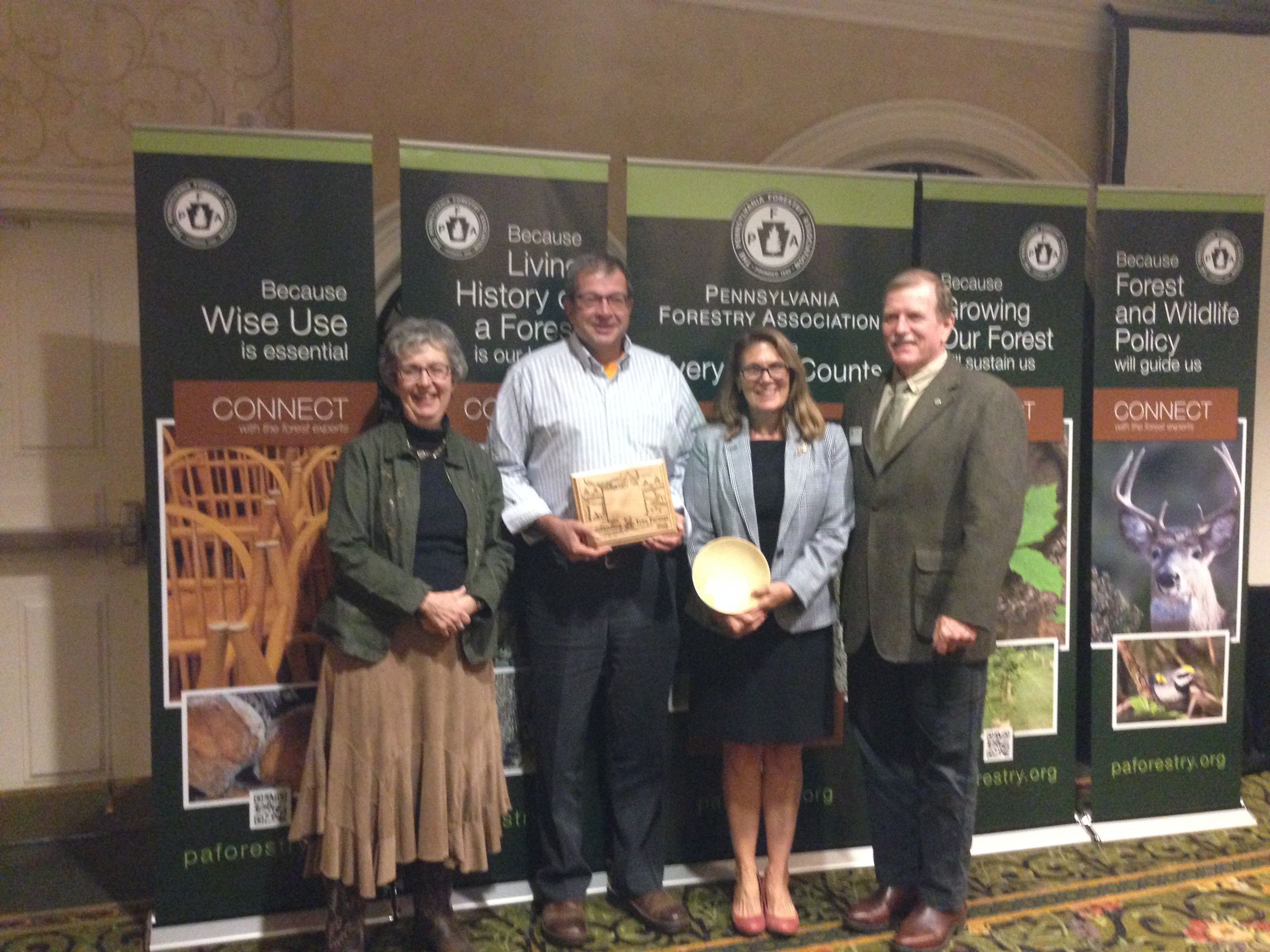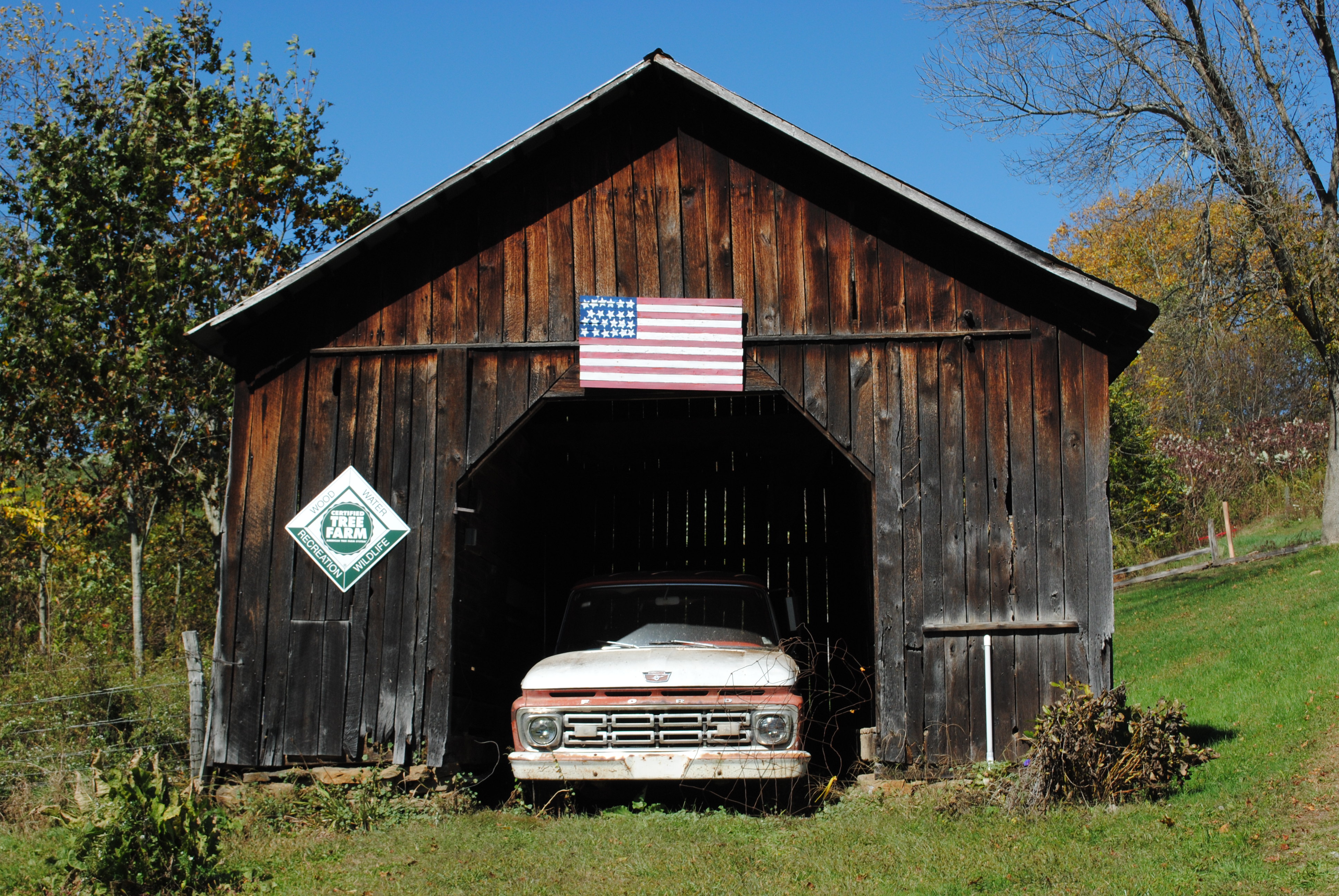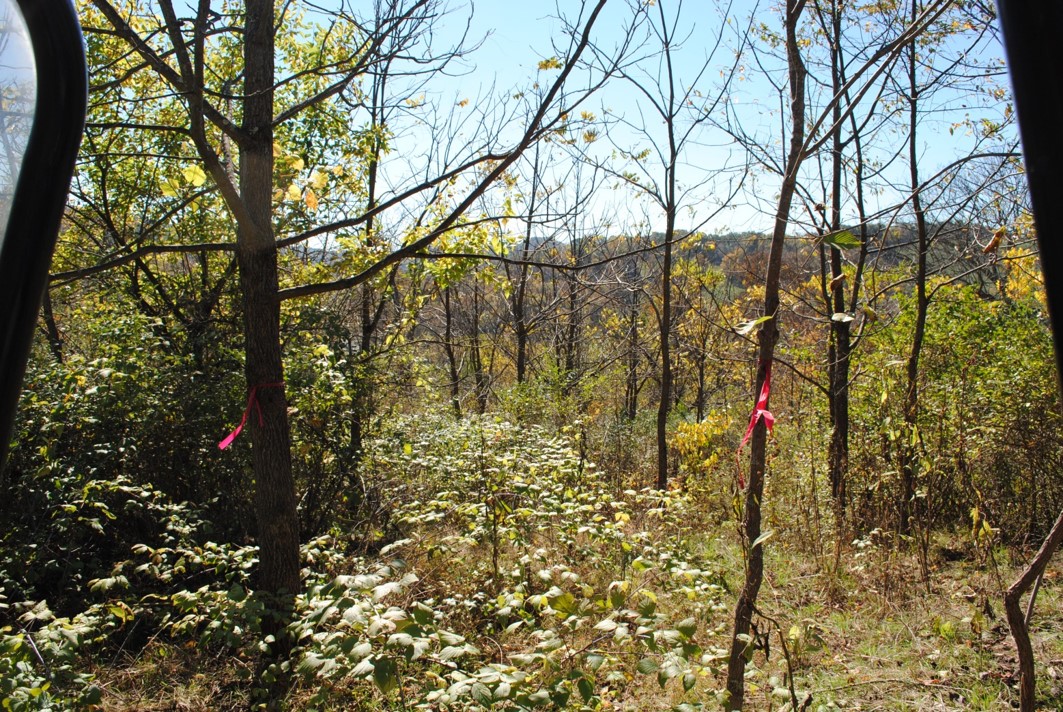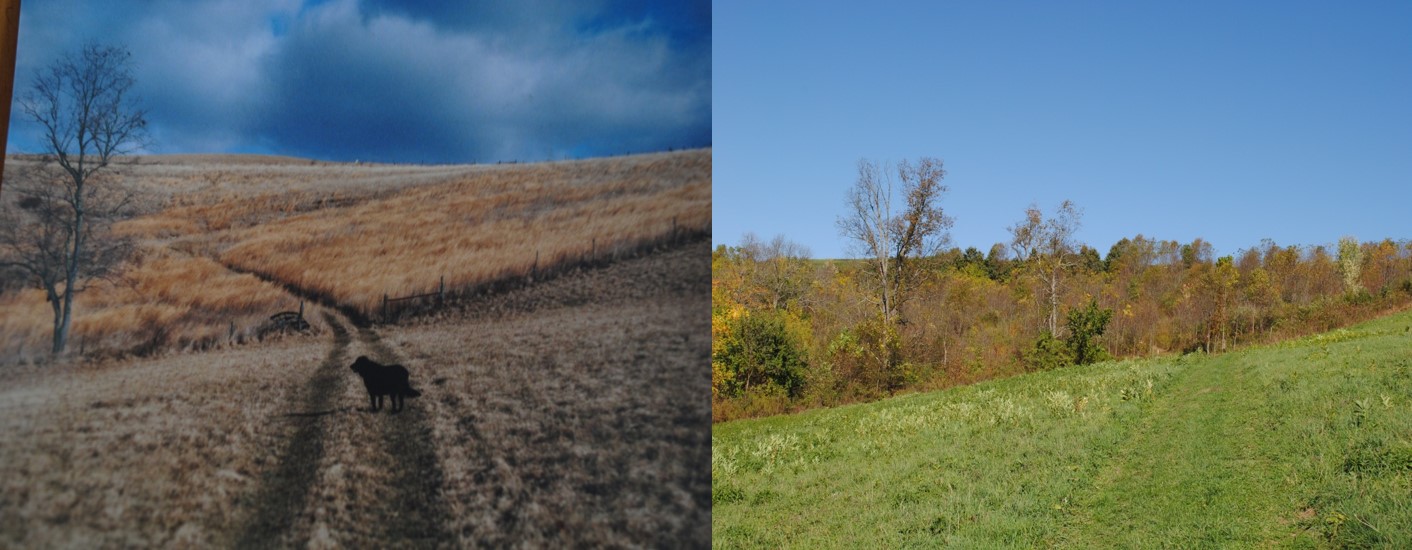Gay and Harold Thistle from Pennsylvania

What makes them outstanding?
The Thistle Tree Farm management plan lays out the steps to convert a historic farm that had supported livestock for over 175 years to a tree farm. In the sixteen years that we have owned it, over 3400 hardwood seedlings have been planted. The results of our early plantings now hold the soil in place on steep slopes and stream banks, provide shade, and support a wide variety of wildlife. An IPM approach is used in controlling invasive plants such as multifloral rose, bush honeysuckle, and mile-a-minute weed. Cooperative programs, from NRCS, West Virginia University, and the PA Bureau of Forestry, have supported our efforts to plant hardwood seedlings and combat invasive weeds. Education and outreach has been very important to our success. We are involved in our local woodland group (SW PA Woodland Owners). We find this collaboration to be very valuable. Our farm has hosted a number of tours for various groups including local and regional school students, area land managers, and forestry professionals. The transformation of our farm is far from complete but we are enjoying our tree plantings as they grow.
Tree Farmer Story
 We purchased our 98.2 acre farm in June of 1999. At that time there were about 30 wooded acres and the rest was pastureland used for hay. The farm had been used to raise sheep and then cattle. It has a generally southern aspect with one perennial stream in the northern woods and an intermittent stream in the wooded area near our residence at the southern end of the property. Elevations range from 900 to 1300 above sea level and the regional physiography is that of an eroded plateau. The original forested land is a typical Appalachian oak-hickory type. Parts of the property had been logged twenty years prior to our purchase. That logging was a high grade and a lot of the large trees were removed.Since 1999, we have planted over 3400 seedlings including black walnut, red oak, white ash, sugar maple, chestnut varieties, and butternuts. We also planted a few conifers but that plantation failed due to a particularly dry spring and then competition from grasses. Interestingly, there are no conifers on the property with the exception of one white pine seedling, we recently found and a few surviving conifers from our planting. We could not have accomplished what we have done without the support and assistance of experts and fellow woodland owners. In 2000, we were founding members of a local woodland group- the SW PA Woodland Owners (SWPWO).
We purchased our 98.2 acre farm in June of 1999. At that time there were about 30 wooded acres and the rest was pastureland used for hay. The farm had been used to raise sheep and then cattle. It has a generally southern aspect with one perennial stream in the northern woods and an intermittent stream in the wooded area near our residence at the southern end of the property. Elevations range from 900 to 1300 above sea level and the regional physiography is that of an eroded plateau. The original forested land is a typical Appalachian oak-hickory type. Parts of the property had been logged twenty years prior to our purchase. That logging was a high grade and a lot of the large trees were removed.Since 1999, we have planted over 3400 seedlings including black walnut, red oak, white ash, sugar maple, chestnut varieties, and butternuts. We also planted a few conifers but that plantation failed due to a particularly dry spring and then competition from grasses. Interestingly, there are no conifers on the property with the exception of one white pine seedling, we recently found and a few surviving conifers from our planting. We could not have accomplished what we have done without the support and assistance of experts and fellow woodland owners. In 2000, we were founding members of a local woodland group- the SW PA Woodland Owners (SWPWO).
We continue to be members of this group and value the education and opportunities for collaboration that this group affords us. In 2001 Bill Wentzel, our PA State Service Forester toured of the property. Bill was key to getting us into the USDA Stewardship program and, most importantly, writing a management plan for the farm. Since this time, we have had two other tours with PA Service Foresters and found each of them to be very valuable. We seek information and assistance whenever we need help. The Service Foresters and fellow woodland owners have all been very supportive of our efforts. We have altered our management plan as new situations arose- like the introduction of mile-a-minute weed. We are currently in the process of updating the management plan. Our tree farm has been recognized twice by Greene County Conservation District as “Outstanding Forest Conservationists” in 2011 and again in 2015 after our PA Tree Farmer award.The woodlot is managed on evenings and weekends since we are still both working. We do the farm work ourselves. The plantations that have access are mowed on a yearly basis. We prune to promote clean butt logs and to cull diseased trees. Time is spent managing the deer protection- straightening up the posts and tubes. Along with growing trees, we have seen evidence that we are increasing the biodiversity on the property by transforming the pastureland into forestland and enriching the soil and water resources, as well as providing habitat for a variety of wildlife.Unfortunately, most of our woodland time is taken up controlling invasive weeds.
Many are mechanically taken care of by regular mowing. The mile-a-minute invasion is being treated with biological control (weevils) as part of an experiment with West Virginia University and the U.S. Forest Service. With the assistance of the NRCS EQIPprogram, we have begun to treat some of the areas of oriental bittersweet and bush honeysuckle. The proliferation of invasive plants is a consideration in harvesting as the invasive take advantage of cleared land.We measure trees for growth in black walnut, white oak, and red oak plots. We use that data to adjust our management strategies. From these annual measurements, we have realized that the white oak stand in the back of the property is barely growing. We know that the previous owner grazed cattle within these woods and there may be a soil compaction problem. We are considering a crop tree release in this area.The woodlots have been managed for sixteen years and we are now enjoying the land we had planted. An area that we call the bowl was planted with Black walnut in 2000 and Red oak in 2001. This area is too steep to mow. The tree planting has stabilized this wet and slump-prone soil and since it was planted at the edge of an existing oak, walnut, hickory, ash, and maple forest, we are seeing a healthy growth of these native seedlings mixed in with the plantation trees. The canopy is closing in the lower section of the bowl and we are working to clear out the bush honeysuckle and grapevine that have been impeding the trees. We are also pruning selected hardwoods as we clear. This is becoming a nice mixed hardwood forest. It is amazing to look at old photos of this area and see that in 1999 it was a hayfield! There are 3 other plots on the property where we have planted trees in hay fields but did not mow and now we have a mixed hardwood forest emerging. These plots host a variety of birds, mammals and reptiles.While we are not ready for a commercial timber harvest yet, we do harvest trees for our own use. We collect firewood to help heat the house and workshop. We own a portable sawmill, where logs from the property are cut into boards. The boards are air dried in the large barn. This wood is used to remodel our old house, have fashioned a maple floor, maple shelves, and mouldings of maple and walnut.When the tree tubes began to appear on our property (even the plantings back in the far reaches got noticed), the neighboring farmers politely asked what we were doing. After a long pause, some would say “I helped clear that field” and others would ask about the cash flow on young plantations. There was local skepticism. Today, we get compliments on our forestry efforts as the woods have grown in and provide color, shade, nuts, and wildlife habitat. We even get asked for advice on growing trees.

Wood
Our management plan includes planting trees with the goal growing high quality hardwoods. The trees are protected from the deer until they grow above browse stage. We planted most seedlings with mulch mats to remove competition for a few critical years. If the plantation is accessible, the grass and brush is mowed once a year to decrease competition for water and nutrients. We prune to help maintain clear and straight butt logs. Diseased trees are removed. Four plots of trees are measured for growth on a yearly basis. It is sad to say that most of our management time on the farm is taken up by controlling invasive plants. For many years, our “date nights” consisted of removing multifloral rose thus, multifloral rose has been minimized (also, thankfully, by rose rosette disease). Bush honeysuckle has taken over the multifloral rose niche quite quickly and again has been combated with mechanical removal, as well as chemical sprays. We have entered into a cooperative agreement with West Virginia University to control Mile-a-Minute weed that had come in on a pipeline right of way. West Virginia University has released weevils on the property and is measuring progress. Japanese barberry has really flourished in the last year within the wooded areas. So far we have only used mechanical means to control this pest, but have determined that we need to use chemicals to guarantee a higher kill rate. We have small outbreaks of oriental bittersweet, autumn olive and Tree of Heaven that we are containing by mowing, but again are planning a mow followed by a chemical spray to combat the bittersweet and autumn olive. We have hacked and squirted the Tree of Heaven, but need to coordinate efforts with a neighboring property owner to get rid of the seed source.
Water
Water is one of the most important components to support a biodiverse environment. The soil survey of our property shows that we have a variety of Dormont silt loams. These types of soils are classified as having a “moderately slow permeability and a high available water capacity. Runoff is rapid, and the hazard of erosion is very severe”. Since our soil types have a high clay component, runoff will cause this fine silt to wash into the streams and settle. As well as have highly erosive soil, the farm has steep hills and valleys that lend themselves to slumps. Early on in our life on this farm, we witnessed this fast runoff during a heavy rainfall. We were walking through an area that we call the bowl. It contains the headwaters of the intermittent stream. This bowl was a mowed pasture when we purchased the place and during this rain event on this day, the bowl resembled a waterfall, as the water rushed over the ground heading downhill. As a result, we planted this area with Black walnuts and Red oaks and have allowed natural seedlings from the adjacent woods to seed in. These trees now stop the land from slumping, help to manage the water during heavy rainfall. In the spring there are now vernal ponds in this area and the intermittent stream is much healthier downstream. We understand the importance of a riparian buffers and have planted trees or allowed the native trees to grow along the waterways on the property. The forested edge along the streams keeps the water cooler for life forms, holds the silty soils in place, and meters the amount of water that dumps into the streams during high water events.
Wildlife
We have managed our land so that most of the pastureland is now in a few stages of successional forestland. This type of forestland supports a wide variety of plants and animals. Our land supports hawthornes, dogwoods, and sassafras as under story trees and clematis vine, elderberry, blackberry, and black raspberry bushes fills in the rest of the under story. Our wildflowers are varied and plentiful throughout the growing season. This varied mix of plant species and food sources supports wildlife habitat for many animals. While pheasants are not native to our area, they are regularly released by the PA Game Commission. A Wood duck was spotted multiple times this Spring and Fall near a seep on one of our trails. We have a year round population of eastern bluebirds. In general our bird population is healthy and varied- from owls and hawks to indigo buntings. A Blue Mountain Mudbug (Cambarus (Jugicambarus) monogalensis) was spotted at a seep on our property. This is the northern edge for this unusual blue, burrowing crayfish that is listed as endangered in West Virginia (less than 15 miles awayto the south and west of our property). We find many newts on the property and the springs support a variety of frog populations. We find many box turtles in our woods keeping cool under the multifloral rose bushes. Our property supports a good population of bats also. We regularly see red fox and coyotes crossing our property. Of course we have whitetail deer which are managed by hunting and exclusion. We enjoy the wildlife signs and sightings. As our property has transformed from field to forest, we delight in the new species we find. It is a good sustainable practice to provide these varied habitats for our wildlife.
Recreation
Our property is a historic place. One of our barns is a hand-hewn log grain barn. The original house was built in 1823 and is a limestone structure. One of our property lines is a fence line of osage orange trees. Daily, we walk our dogs on the property. We have developed a variety of trail routes that we maintain for access and enjoyment. Our property has a few high points that offer great views of the surrounding countryside. It is enjoyable to watch the changing of the seasons. Spring is so exciting with the anticipation of green shoots that may lead to a flower or a tree seedling. In the back of the property, we have a great population of dogwoods that show off in the spring. Summer brings us many field flowers and cool shade in our plantations. We have a spot set up in the closest Black Walnut plantation where we set out benches and a sculpture. We have hosted a few "Wine in the Walnuts" events at this spot. The berries ripen and we pick them to make jams and jellies that taste so great in the dead of winter. In the Fall, we again are excited about the many changes that we witness during this season. We spend time in the woods gathering firewood and enjoying the golden colors of an oak-hickory forest. During the winter we snowshoe and cross country ski throughout the place. It is great to check out the footprints in the snow and try to guess what they are and where they are off to. It is important to us to maintain the historic value of this place as we change the usage from animal husbandry farming to tree farming.


